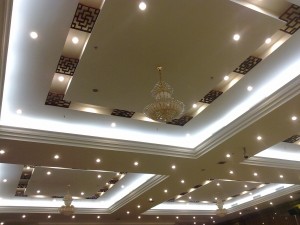In 2012 the British LED International Exhibition ( EuroLED ) spokesman: LED manufacturer Tom van den Bussche Prichard photoelectric testing experts, LUX-TSI David Hard man, Cree Derek Tibbitts and Birmingham Science Park – Aston David Hardman.
LED chip maker Puri photoelectric ( Bridge lux ) European marketing director Tom van den Busch points out, LED high bay chip production to the silicon substrate transfer will enable cost reduction of 75%, this is because the silicon prices decline, but also because of the larger size (8 inches ) of the platform can use those who have moved to12 inch silicon wafer production waste factory.
Van den Bussche added, super high flux led, photoelectric will at the end of the year to begin production of silicon substrate of gallium nitride LED.
Prichard photoelectric recent shows cold white color temperature of4700K time efficiency of 160 LM / W and warm white color3000K time efficiency of 125 LM / W silicon substrate LED lights, super high flux led, such performance has been able to work with today’s most advanced devices match. It is a key problem in the production of Puri photoelectric can achieve the same performance.
If you can, then the silicon based manufacturing method should be able to substantially reduce the cost, because the present method is mainly confined to4inch wafer, need a large number of inefficient and time-consuming production phase, super high flux led, such as GaN film is removed from the sapphire substrate laser stripping step.
Some of silicon substrate gallium nitride method skeptics argue that, in high temperature MOCVD deposition process, because the two crystal lattice mismatch between the inherent characteristics, need to produce a complex buffer layer to eliminate the lattice mismatch caused by stress, which is the method of a critical defect. They think, if the sapphire substrate scaling problems were solved, the current overcapacity is absorbed, then the sapphire material is still the first choice. Current, super high flux led, overcapacity hindered the industry leading manufacturer to6 inch LED sapphire and silicon carbide wafer manufacturing transfer.

